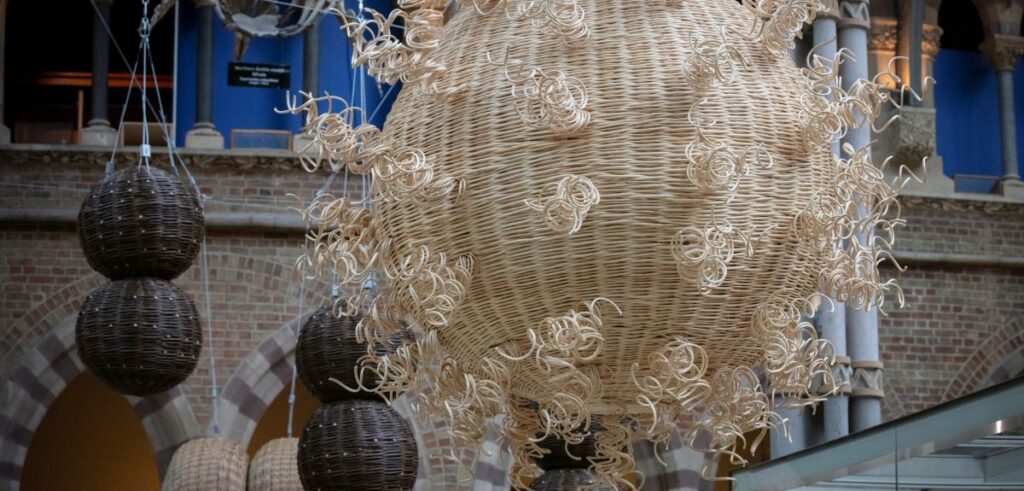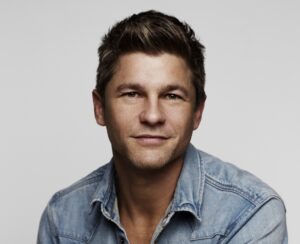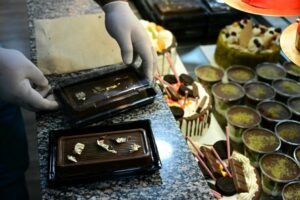Oxford Vaccine Group: 30 years battling ‘deadly six’ diseases with major art installation

The installation consists of six, three-dimensional sculptures woven in English willow. By Angela Palmer (with permission)
To promote scientific education, a major art installation featuring dramatically upscaled bacteria, viruses and a parasite will be unveiled on 26 September at Oxford University’s Museum of Natural History.
The aim is to celebrate 30 years of vaccine development at the Oxford Vaccine Group (OVG) tackling some of the world’s most deadly diseases.
The event is called The Deadly Six: Oxford’s Battle with the Microbial World and it has been designed by acclaimed Scottish artist Angela Palmer. The event will be opened by leading scientists like Prof. Sir Andrew Pollard and Prof. Teresa Lambe OBE together with the creative artist, Angela Palmer.
Read more: Promoting clean energy through art
The Oxford Vaccine Group which was established in 1994, and set out to provide scientific research into the development and implementation of vaccines, in particular diseases for which there were at the time no effective vaccines.
The installation consists of six, three-dimensional sculptures woven in English willow, representing different diseases for which OVG has developed a vaccine: pneumonia, meningitis, typhoid, COVID, malaria and Ebola. Five of these will be suspended in the central room of the Museum, within the How Evolution Works gallery, with the sixth – a 2.4m long representation of Ebola weighing 75kg – lying at floor level.
“For 30 years, OVG has been working at the forefront of vaccine research in the fight against these diseases and many others, saving millions of lives, and helping people of all ages live longer, happier and healthier lives,” Professor Pollard explains “and it is really exciting to see Angela bring this to life in her artwork.”
Palmer, whose sculptures are in museums worldwide, previously created a glass sculpture of the original Wuhan coronavirus particle sphere at 8 million times its size, which was unveiled at the Museum of Natural History and is now on display in London’s Science Museum.
“I had originally planned to use the same technique” explains Palmer, “However apart from the coronavirus, none of these have been modelled in 3D.”
“I was battling to find an alternative concept” she continues, “and came across a collection of strange, three-dimensional shapes woven in straw while on holiday. One particularly reminded me of the meningitis bacteria form, and it struck that I could explore creating the entire installation in willow.”
“Willow was immediately appealing to me” Palmer adds “It is a native British tree and is imbued with medical associations dating back some 3,500 years.”
Palmer then tracked down two of the foremost weavers in the UK, Jenny Crisp and Issy Wilkes to collaborate on the project. Supported by a further renowned willow weaver in Mel Bastier, the sculptures were then created, formed from the artist’s drawings and files of scientific illustrations, testing the potential capabilities of willow to its limits.
Sound will also feature within the installation, with a speaker inserted into the sculpture representing the malaria parasite. This plays the sinister but familiar high-pitched ‘whine’ of one of the most lethal mosquitoes in the world (the sound of Anopheles Funestus will be played on a loop, pausing 10 seconds every minute to symbolise the fact that today a child under the age of 5 dies of malaria every 60 seconds).
The installation has been partly funded by the University of Oxford’s Gardens, Libraries and Museums (GLAM) division and will be open to members of the public from 26 September 2024 to 5 January 2025.
Oxford Vaccine Group: 30 years battling ‘deadly six’ diseases with major art installation
#Oxford #Vaccine #Group #years #battling #deadly #diseases #major #art #installation





